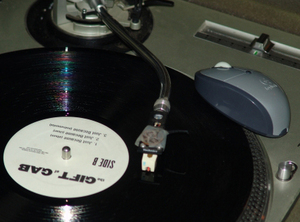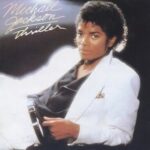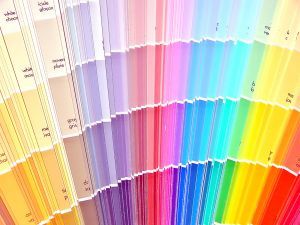It used to be that it took thousands and thousands of dollars to put together even the most basic recording studio. Then the digital age came, and all that seems quite ludicrous.
If you making music is your primary business, it still pays to invest in the highest-quality (read: expensive!!) equipment, to make your home recording studio as accessible and useful as possible.
However, for hobbyists and those just starting out, just a few hundred dollars and a laptop is all you need to build a home recording studio that will suit your purposes nicely.
I would like to describe my own setup, which some may call piecemeal and possibly not the “best” way to do things. The important thing is that it works, and works well. I am sure there are those who will disagree with the equipment I use, the software I use, my musical tastes, and so on.
However, I document it all here to serve as an example that an accessible home recording studio can indeed be put together inexpensively.
Part I – Audio Recording Hardware
Compaq Presario laptop
I purchased the Compaq Presario V6000 about a year and a half ago. It has a dual-core AMD Turion and 1 GB of memory. It is sufficient for my purposes at this time, but as music software gets more complicated, I may need to up upgrade. When dealing with large music files in whichever software program you choose, one of the most important characteristics of your machine is RAM. Having at least 1 GB, but preferably 2 GBs or more, will seriously speed up the process of your music creation, and the amount of audio tracks your machine can process simultaneously. A large hard drive is also important. Audio files can eat up disk space very quickly, and the 80 GB drive on my Compaq Presario V6000 is perpetually full!
M-Audio Ozonic Firewire Audio Interface
The M-Audio Ozonic is my primary hardware audio interface. There are any number of ways to go, some basic interfaces are a little less expensive, though I did find the M-Audio Ozonic at Guitar Center in Pasadena for a greatly-discounted price of $199. A primary feature I looked at when deciding to investing in the M-Audio Ozonic is that it employs Firewire as a means to connect to the computer, as opposed to USB. Many audio interfaces use USB, and the difference is not great, though Firewire allows for slightly lower latency times and greater data transfer rates, depending on the specifications of the computer you are using.
The M-Audio Ozonic has XLR, 1/4 in. mono, MIDI, and balanced 1/4 in. split-stereo inputs. It also has MIDI, balanced and unbalanced line outs, and a 1/4 in. headphone output. The M-Audio Ozonic also has a wonderful feature called phantom power, meaning it can serve as a preamp for instruments and microphones alike.
Billed as an “All-In-One” interface, the M-Audio Ozonic also features a 37-key piano-style MIDI keyboard, and any number of knobs and switches to control various features of the album. Please note that the M-Audio Ozonic is not a standalone synthesizer, meaning that it requires software or another MIDI device to function, and carrys no onboard sounds.
Akai MPD16 USB/ MIDI Drum Controller
The Akai MPD16 is a simple but effective USB/ MIDI drum controlling device. The 16 pressure-sensitive pads, the same as those found on Akai’s popular MPC series of hardware synthesizers, allow for very expressive recording and performance of drum lines with 157 levels of pressure sensitivity. There are also any number of secondary functions you can perform with the Akai MPD16.
DJs use it for cuing samples on stage, and “bumping” or “nudging their MP3 files to make them synch properly. Producers use it to create and and manipulate loops, and for any number of other function. It is a versatile piece of equipment, and was a steal at $99. See my full review for more information on the Akai MPD16.
Shure SM57 microphone
Like any piece of hardware for music or any other artistic discipline, spending more money will often get you higher quality. I would recommend a Blue condenser microphone, or some such thing, but I guarantee you won’t find a better-sounding or more durable instrument microphone than the Shure SM57 for under $100. I don’t know a whole lot about the technical side of microphones, but I know that of all the inexpensive instrument microphones I have used, the Shure SM57 provided by-far the best quality of audio.
If you are going to be primarily or exclusively recording vocals, you might want to consider the similarly-priced Shure SM58, or even spending $100 more for a decent condenser microphone instead.
Reference Monitors/ Headphones
The one piece of my setup I have been missing for quite some time is a good pair of powered reference monitors. Many people swear by the M-Audio BX5s, but I just can’t see spending that much on a pair of speakers. I have used them in a friend’s home setup, and they sound great, and add a lot to the experience. I still use old computer speakers, which do not accurately reproduce how the final mix will sound in most applications. This is invaluable when putting tracks together.
I use Yamaha headphones that came with my SilentBrass practice/recording setup for trumpet.
Part II – Audio Recording Software
I must confess, I am relatively inexperienced when it comes to choosing, and fully-utilizing the features of, the many different software suites available for PC and Mac. Some to consider, depending on your purpose: Logic Pro, Reason, Cakewalk, FL Studio (formerly known as Fruity Loops), Live, and Pro Tools. Most industry professionals use the various hardware/software combos of Pro Tools, but this is not accessible for our purpose of building an inexpensive and user-friendly home recording studio.
I primarily use Live, by the German company Ableton, because the LE version came with my M-Audio Ozonic. This is a great piece of software, and the price to upgrade from the (fully-functional) LE version to the professional version was a no-brainer, when you consider all the things that Ableton Live can do.
I am learning new features every day within this program, and if you are struggling with it, the Ableton forums are a great place to start. It is easy to get Ableton Live to interface with my various pieces of hardware, and contrary to some of the others listed above, you do not need a state-of-the-art computer to run it well. The version I have was factory-set to work natively with M-Audio products, but hooking up my other devices has been easy to do.
Another piece of software that has been extremely useful has been the free and open-source sound recording and editing program Audacity. Audacity is a deceptively simple and powerful audio editor that I use to cut and edit samples, as well as applying effects to the tracks I have recorded individually, before switching them back into Live for further sequencing/editing.
You can’t beat the price, and an increasing number of producers and video editors are using Audacity to put their audio tracks together, as many of these other programs are getting expensive and complicated!
I am a musician first, and I put together my simple and relatively inexpensive home recording studio as a way to get my own ideas down and share them with those I collaborate with. I would rather spend big bucks on trumpets and guitars than on software.
But, since starting out in learning how to use the hardware and software in my own basic home recording studio, I have been amazed at what can be done using computer-based recording. Only a few years ago, the same features that the above hardware and software audio production tools bring to the table would have cost me thousands upon thousands of dollars.
If you are a musician who wants to get your ideas down on record, or a producer of electronic music, sometimes having the very fancy, expensive equipment will not be a good investment when just starting out. Better to invest that money in records, promoting yourself, education, and any number of things related to your craft. I hope this article has been useful, and that you have found some ideas in putting your own home recording studio together.






